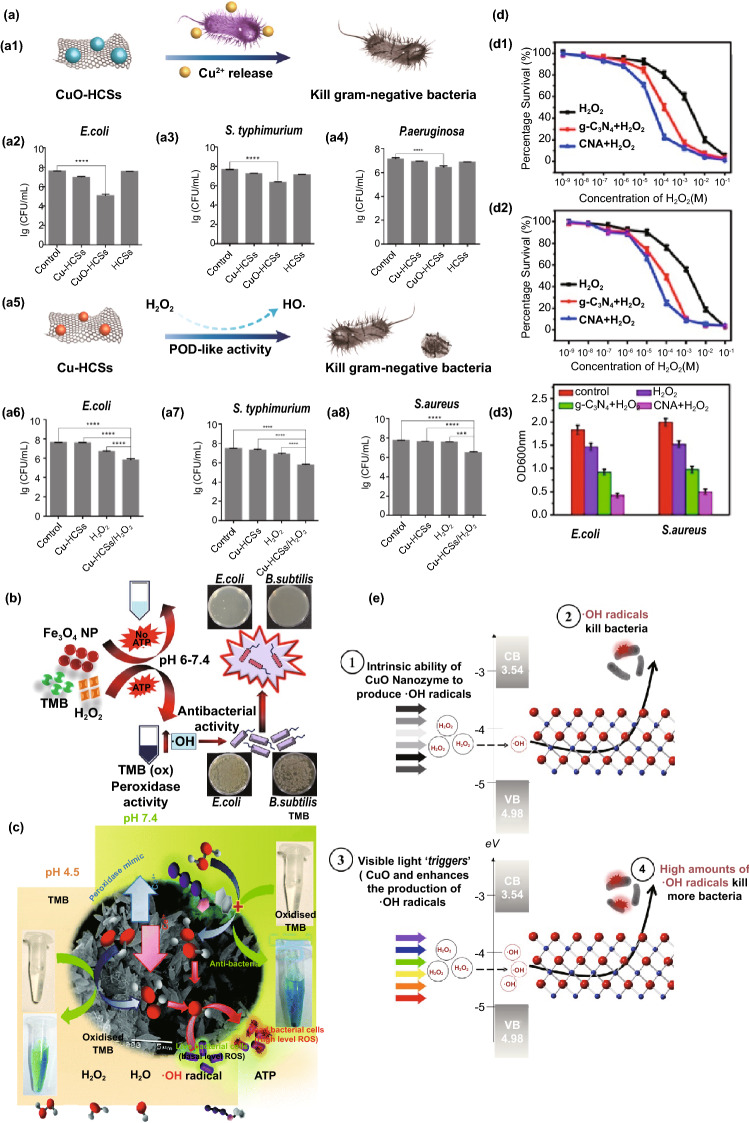Fig. 9.
a1, a5 Antibacterial mechanism of Cu/C nanozymes with two Cu states (Cu0 and Cu2+). The actual antibacterial ability of CuO-HCSs, Cu-HCSs and HCSs against a2 E. coli, a3 S. typhimurium, and a4 P. aeruginosa. The actual antibacterial ability of Cu-HCSs, H2O2 and Cu-HCSs/H2O2 against a6 E. coli, a7 S. typhimurium and a8 S. aureus. b Antibacterial activity against E. coli and B. subtilis of Fe3O4 NPs before and after ATP introduction at pH 6–7.4. c Catalytic activity of CeO2 nanocrystals before and after ATP introduction at pH 4.5 and 7.4. The bacterial viability of d1 E. coli and d2 S. aureusand with different treatments (H2O2, g-C3N4 + H2O2, CNA + H2O2). d3 Optical density at 600 nm of bacterial suspension in different solutions. e Schematic illustration of the antibacterial principle of CuO NRs with the light as external triggers.
Adapted from a Ref. [232], b Ref. [378], c Ref. [379], d Ref. [382], e Ref. [369] with permission

